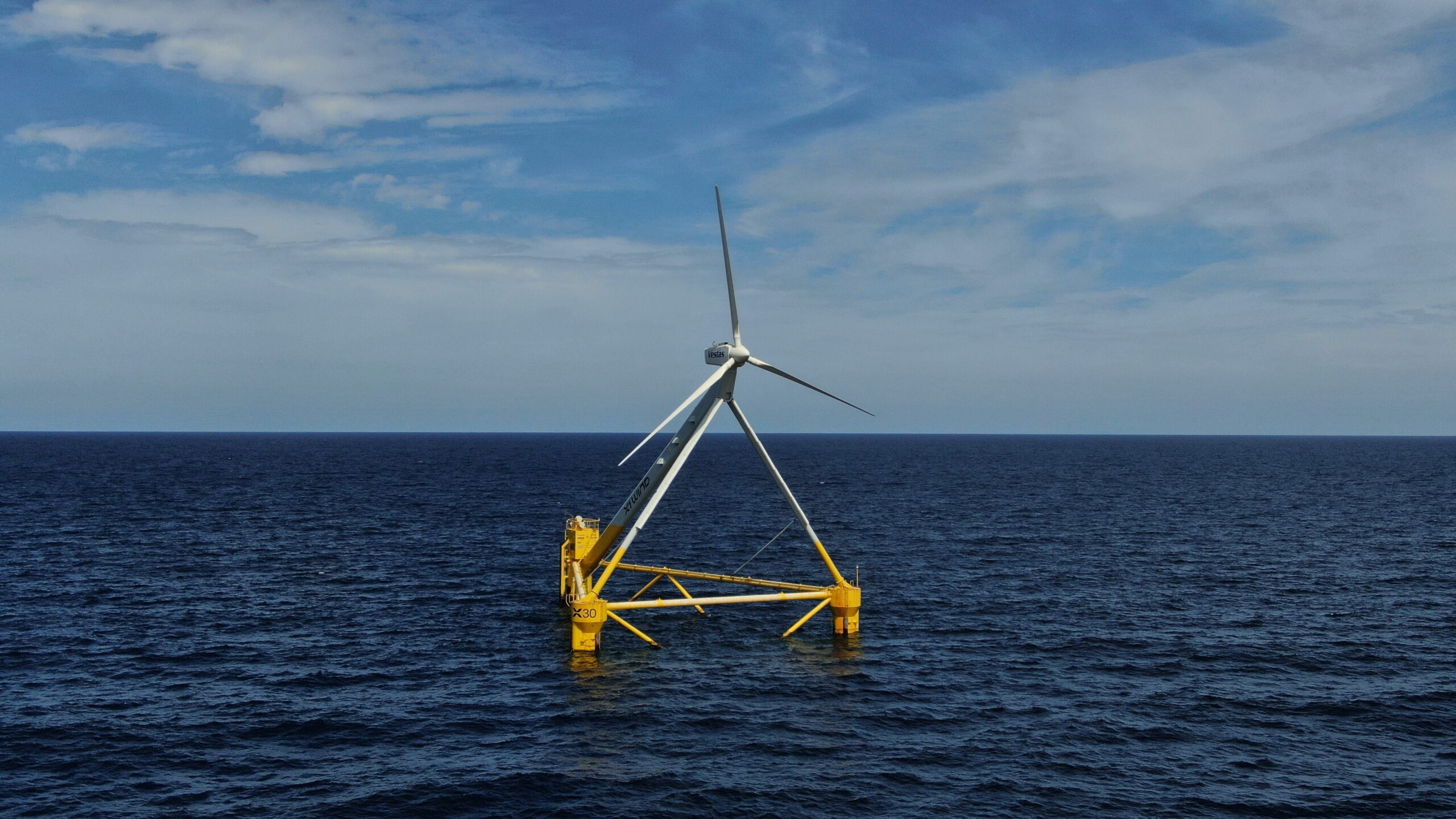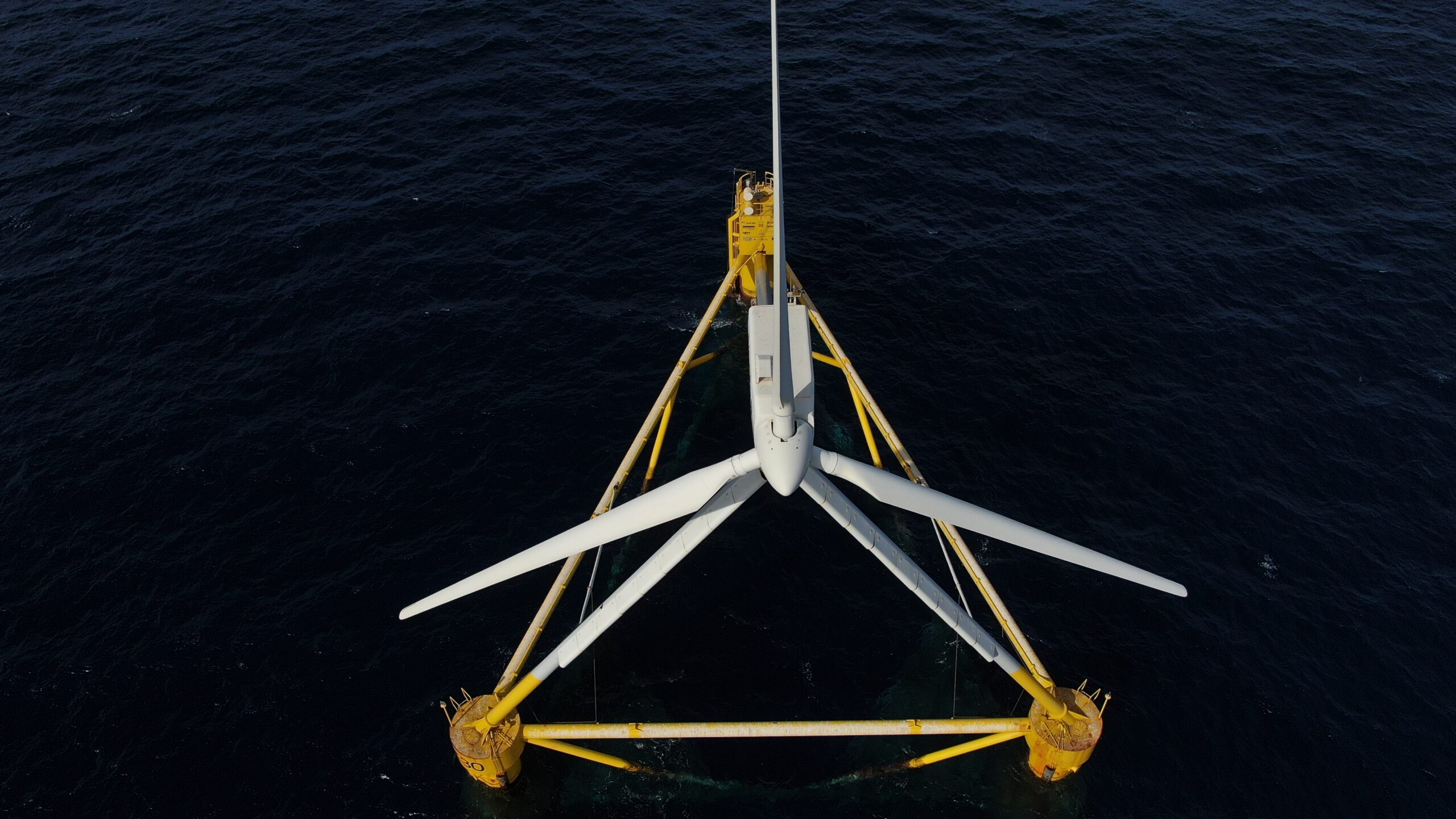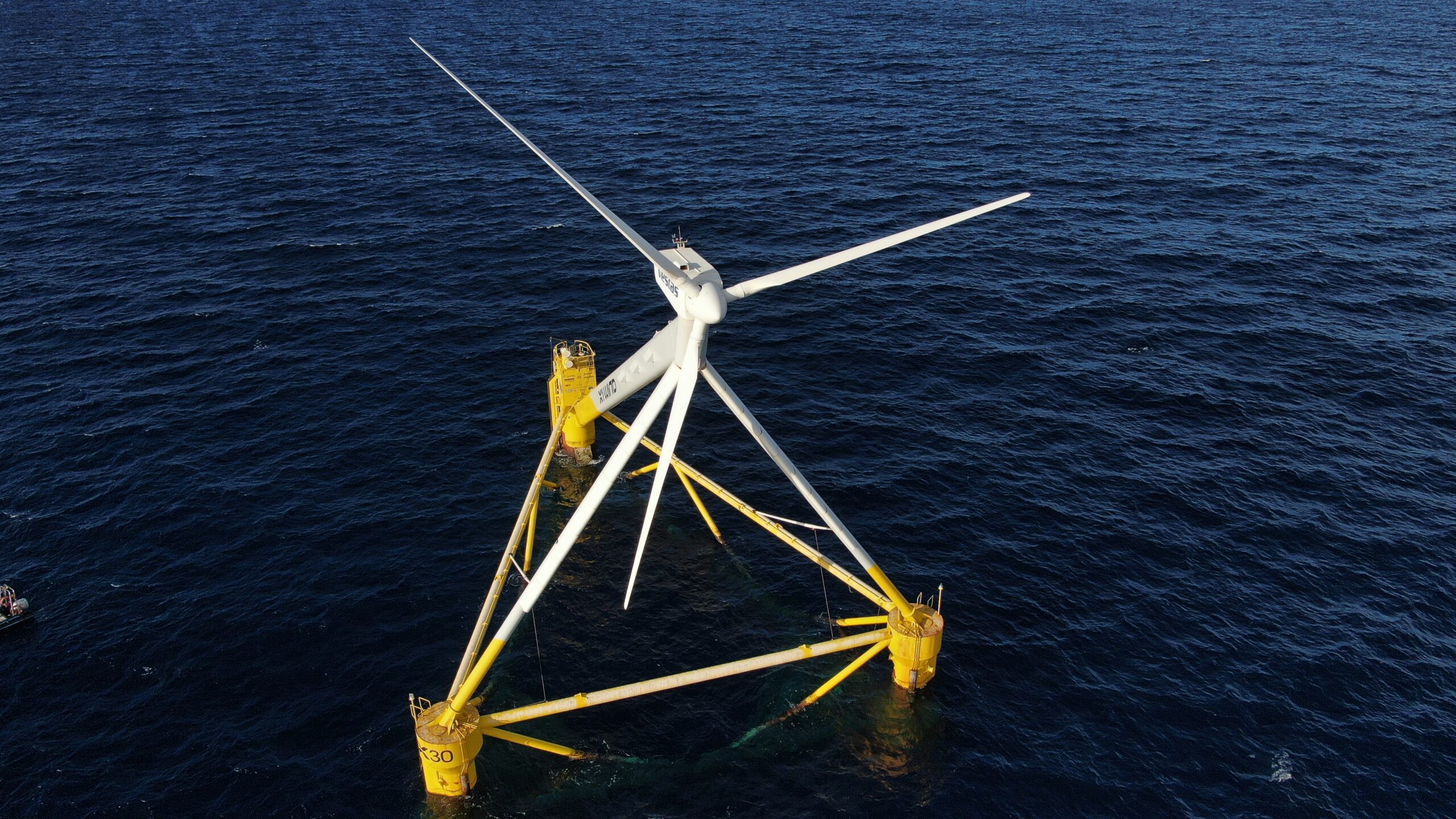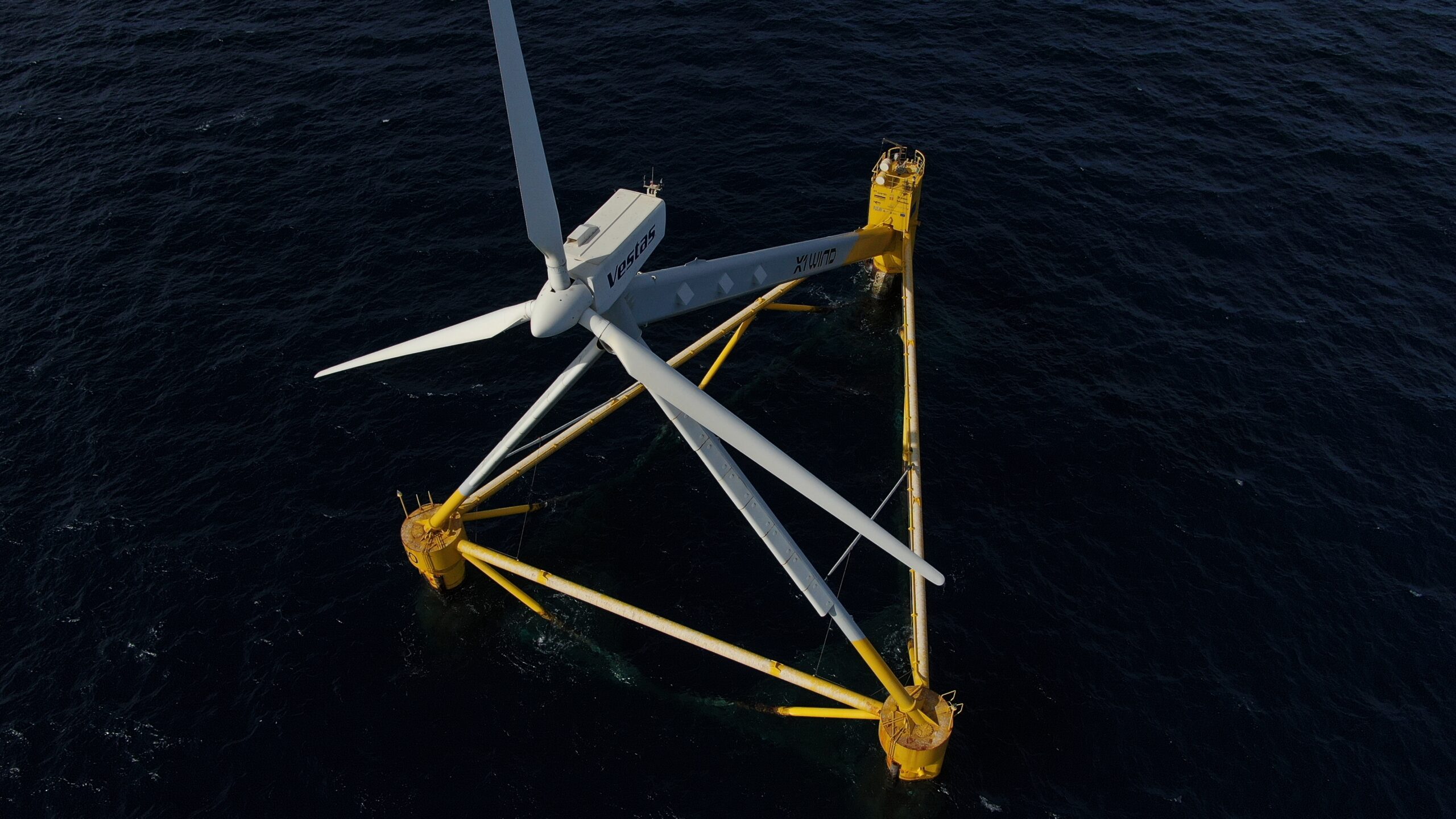The PivotBuoy Project, developed by X1 Wind in collaboration with 9 industry and R&D leaders, finalized its offshore demonstration with excellent results that promise to revolutionize the floating wind industry.
The Spanish firm’s X30 platform was tested in full operational conditions at PLOCAN from October 2022 to May 2023. During the 7-month demonstration, the device became the world’s first fully functional floating wind TLP (Tension Leg Platform). The unit fed its electricity to PLOCAN’s Platform via a 1.4km 20kV subsea cable.
X1 Wind CEO Alex Raventos said that the recently published results illustrate excellent performance across a broad range of parameters including platform stability, passive alignment, structural behaviour and power production:
“The PivotBuoy Project marked an important phase in the development of our innovative technology,” he said. “It allowed us to retrieve large amounts of data for a sustained period of time in full operational conditions. This data was collected from multiple sensors installed across the platform through a dedicated and proprietary SCADA called Floating Management System. These findings have provided crucial insights which are now being incorporated into X1 Wind’s ongoing commercial-scale projects, including the NextFloat Project.”
The most striking result is that data showed very good alignment with the wind using its passive orientation system. The platform showed better alignment than publicly available data for traditional active yaw systems for strong winds (>7.5m/s) and similar alignment for lower wind speeds (<7.5m/s).
In terms of power production, energy generated by the modified Vestas V29 – which operates in a downwind configuration – was well aligned with theoretical models, with no sign of power loss or increased 3P vibration due to the tripod shadow. The results confirm that X1 Wind’s streamlined tripod arrangement eliminates the known drawbacks typically associated with downwind operation.
In addition, the platform overcame several harsh storms, with maximum wave heights reaching 6.7 meters, equivalent to more than 20 meters in full-scale. During these extreme events, the unit behaved well with motions and accelerations matching the predictions in simulation models.
Mr Raventos added that the decommissioning process, which was a requirement after the end of the EU funded project in March 2023, also proved the ease of disconnection of its innovative single point mooring system, successfully completing the disconnection, unhook and towing in less than one working day.
“This is another milestone for the industry, especially taking into account that we use a TLP mooring (which provides many advantages but historically was very difficult to hook and un-hook). By proving that our PivotBuoy® mooring system can be easily hooked and unhooked we’ve shown that TLPs can easily be installed, decommissioned or maintained at port in case a tow-to-port maintenance operation is needed. The X30 platform was towed to Araniaga Port for its full decommissioning, removing the key elements for further analysis and offering some parts to the Instituto Técnológico de Canarias (ITC) for educational purposes at its facilities in Pozo Izquierdo. All this learning is key in the development of the commercial scale units” he said.
The PivotBuoy Consortium comprised of nine partners from five different countries (X1 Wind, ESM, WavEC, PLOCAN, INTECSEA, EDP, DTU, DNV GL, and DEGIMA). The project aimed to demonstrate the innovative PivotBuoy mooring system configuration which combines the advantages of a SPM (single point mooring) with a small TLP (Tension-Leg Platform) mooring system, allowing the platform to reach deeper waters and minimizing the footprint and impact on the seabed. The platform validated its lightweight and stable floater, which was easily wet towed by local vessels, simplifying and accelerating the installation process.
X1 Wind is a disruptive floating wind technology developer. Based in Barcelona, Spain, the firm’s mission is to provide highly scalable solutions which deliver clean, affordable energy while reducing carbon emissions across the globe. The company’s unique floating wind concept was initially developed by Carlos Casanovas in 2012 while studying at the Massachusetts Institute of Technology (MIT), before progressing with the patented technology for almost a decade. In recent years, X1 Wind has rapidly progressed its technology, having successfully executed several tank testing campaigns and completed the design, assembly, load-out, and decommissioning of a full-featured part-scale demonstrator in the Canary Islands. It has recently been selected by the European Commission to deliver the NextFloat project, an ambitious program accelerating industrial-scale floating wind together with Technip Energies and a consortium of 12 partners, to install the first commercial-scale pilot of this innovative technology in the South of France (read more). The company has steadily been building a world-class team of experts in the offshore wind industry and related sectors.



